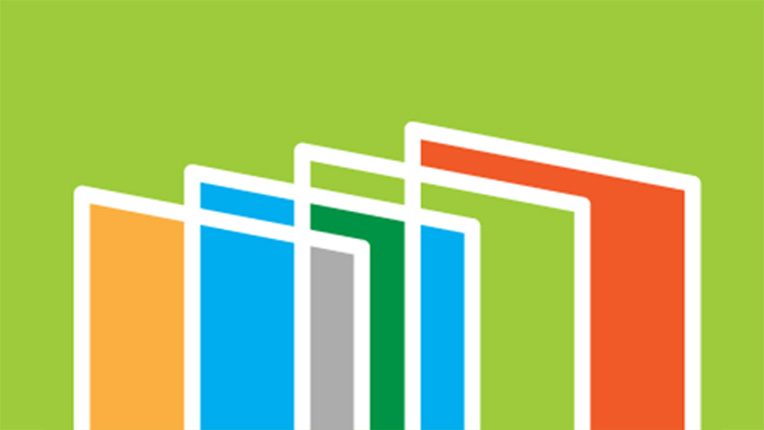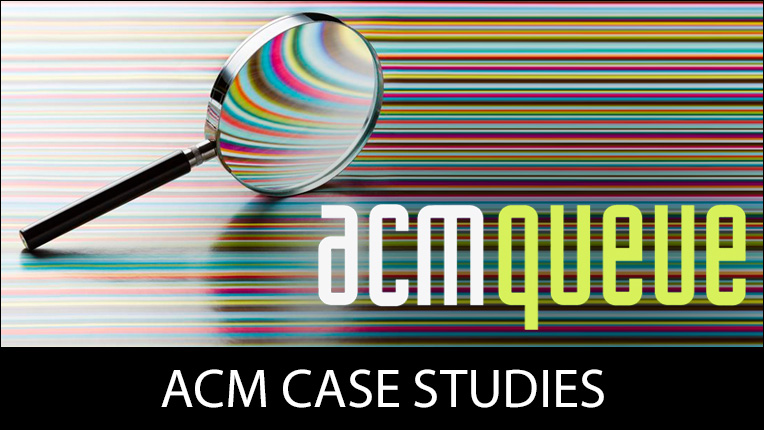ACM OPEN – Frequently Asked Questions
For Institutions - ACM Open
Who is eligible for the Open Access publishing option?
Will I continue to have access to the ACM articles I read?
How is my institution’s ACM OPEN Tier classification determined?
For Institutions - Digital Library Premium
What is Digital Library Premium?
Why did ACM change its pricing model?
Are consortium discounts still available?
Is the Guide to Computing Literature included?
Can I prepay for a multi-year agreement?
Will current Digital Library (Read Only access) subscribers need to take action?
How can I learn more about the ACM OPEN model or Digital Library Premium?
For Authors
Why should an institution encourage its researchers to publish their work Open Access?
How will my article be published Open Access?
How does this new agreement affect me serving as a reviewer or editor for ACM journals?
What article types are eligible for Open Access publication in the ACM OPEN license model?
For Institutions - ACM Open
Who is eligible for the Open Access publishing option?
All corresponding authors from an institution participating in ACM Open will have their research articles published Open Access in ACM journals, conference proceedings, and magazines, in perpetuity at the time of publication at no cost to the authors. The corresponding author must use their institution’s email for the ACM Rights System to recognize their paper as part of the ACM Open program.
When you publish your article Open Access, it becomes immediately accessible to the world to read for free. As a result, your research will be more widely disseminated and will have greater impact. ACM compared thousands of articles published Open Access in the ACM DL against thousands of articles published behind the Digital Library paywall, and on average the OA articles receive 2-3x the number of full-text article downloads and 70% more citations. In addition, authors of OA published articles are immediately compliant with the vast majority of Public and Private Research Funder Open Access Mandates.
Will I continue to have access to the ACM articles I read?
Under the ACM OPEN agreement, faculty and students will continue to receive unlimited and unrestricted access to all articles in the ACM Digital Library, as according to ACM’s regular terms of use found at ACM Digital Library Terms of Use.
How is my institution’s ACM OPEN Tier classification determined?
Your institution’s ACM OPEN Tier is determined by the average number of its affiliated corresponding authored peer-reviewed research articles published over the last 3 full year period. Current ACM OPEN-participating institutions will have their ACM OPEN Tier for the next license period determined by using the annual average from the final 3 years of their current ACM OPEN license period.
If an institution sees a decline in publishing, upon renewal, the institution would renew at a lower tier. Conversely, if an institution sees an increase in their research output, they would move up to a higher tier at their time of renewal. We do not raise or lower the tiers and the corresponding fees while an ACM OPEN license is active. Institutions can rely on ACM's predictability in pricing for the duration of their ACM OPEN license agreement.
As the scholarly publishing industry transitions to sustainable models for Open Access publication, having accurate and reliable publication data has become more important than ever before for societies and publishers to ensure that articles eligible for Open Access publication are identified, routed through the appropriate publication workflows, and accurately reported on to those paying for Open Access publication (i.e. - institutions, authors, funders, other sources, etc.).
In the ACM OPEN model, an article’s eligibility to participate in the program is dependent on the institutional affiliation of the corresponding author, so it is critical to accurately identify both the corresponding author and their institutional affiliation. Historically, since author names can be ambiguous and authors do not always list their affiliations the same way in their articles over time, list multiple affiliations related to a single published Work, or use Gmail or other generic domain names for their contact information, accurate author and institutional name normalization has been a long-standing issue in the publishing community and is a challenge nearly all publishers are working on both separately and together. Several related industry efforts to solve this problem are ORCID and ROR and ACM is participating in both of these efforts.
In addition to these industry efforts which will take time to fully implement and realize the benefits of, ACM has recently started to implement a new automated affiliation hierarchy system and incorporate manual checks into its production workflows and reporting systems for ACM published articles and ACM OPEN publication data as part of an overall effort to provide more accurate reporting. Nevertheless, ensuring the complete accuracy of publication data underpinning the tiering and pricing for the ACM OPEN program should be treated as a goal that will take years to achieve.
For this reason, it is possible that over time our new automated systems and manual checks will identify articles that were previously excluded from the reported data or that articles reported as belonging to an ACM OPEN institution may either not be appropriate for inclusion in ACM OPEN or else misattributed to that institution. As a result, the article data previously sent to an institution may change over time as these affiliation processes improve. Based on a detailed review of the data and new Quality Assurance procedures being implemented for ACM OPEN and the ACM Digital Library, ACM is confident that the data is overwhelmingly accurate (over 90%) and that our focus is on the edge cases to ensure that the community can trust the data that appears both in the ACM Digital Library and provided to our ACM OPEN customers. The success of the ACM OPEN model will depend on a variety of factors, including the accuracy of our data, and so we believe that our ACM OPEN institutional partners have a strong role to play with these efforts by periodically checking the article data it receives from ACM and notifying us if anything appears incorrect or potentially missing. Where errors or omissions are identified, ACM will make the appropriate changes to ensure the integrity of ACM OPEN and the relationship between ACM and our institutional and consortial partners. The complete and accurate affiliation of research articles is a long-term goal for the publishing industry as a whole, and ACM appreciates the partnership of the academic community in this effort.
For Institutions - Digital Library Premium
What is Digital Library Premium?
Digital Library Premium provides full-text access to ACM’s publications, advanced discovery tools, and the Guide to Computing Literature—an indexing service that includes content from over 8,000 publishers.
The new pricing model goes into effect on January 1, 2026. Institutions currently subscribed to Digital Library (Read Only access) will be transitioned as follows:
- Digital Library (Read Only access) institutions that would fall into ACM Open Tier 10 will be automatically upgraded to ACM Open at the same price (plus annual inflationary increase) or less, according to the pricing model.
- Tier 1–9 Digital Library (Read Only access) institutions that have not already migrated to ACM Open will be automatically renewed into Digital Library Premium at the same price (plus annual inflationary increase) or less.
- Each customer will receive a new license agreement or automated renewal notice reflecting the appropriate transition.
Why did ACM change its pricing model?
To improve consistency, align pricing with usage and content value, and simplify legacy discount structures that varied by region and consortium.
Are consortium discounts still available?
ACM has sunset traditional consortium discounting which is now integrated into the new lower cost price model. Standard pricing is applied transparently by tier.
Is the Guide to Computing Literature included?
Yes. The Guide to Computing Literature (a robust indexing service covering over 8,000 publishers) is included in Digital Library Premium.
Can I prepay for a multi-year agreement?
Yes. ACM offers a 3–5% discount for institutions choosing to prepay for the full term of a multi-year license.
Will current Digital Library (Read Only access) subscribers need to take action?
No. Institutions will be automatically transitioned and notified with updated documentation ahead of their renewal. The only action required would be if an institution elects to cancel their subscription.
How can I learn more about the ACM OPEN model or Digital Library Premium?
Please contact [email protected] for more information.
For Authors
Why should an institution encourage its researchers to publish their work Open Access?
If you publish your paper Open Access, you can retain your rights as an author and your work becomes immediately accessible to the world to read for free. As a result, your research will be more widely disseminated and will have greater impact. The default authors' rights selection for authors affiliated with an institution participating in ACM OPEN is a Creative Commons CC-BY license, facilitating compliance with funder mandates.
How will my article be published Open Access?
Beginning January 1, 2026, all authors will be required to pay an APC or a corresponding author will need to be affiliated with an ACM Open institution. The rights choice will default to Permission to Publish, the authors will own the copyright to their paper, and they will have to choose from one of two Creative Commons License, CC-BY or CC-BY-NC-ND.
Currently, when authors whose papers are being published in an ACM Conference, ACM Journal or ACM Magazine and the corresponding author is affiliated with an ACM Open institution, their rights choice is defaulted to Institutionally Paid Open Access. The authors will own the copyright to their paper and the corresponding author will be able to choose from one of six Creative Commons License types. For authors whose paper is being published in the ICPS series and their paper is not part of the ACM Open program, their rights choice is defaulted to Permission to Publish. The authors will own the copyright to their paper and the corresponding author will be able to choose one of six Creative Commons License. For authors whose paper are being published in an ACM Conference, ACM Journal or ACM Magazine and their paper is not part of the ACM Open program, they are given the option to pay the Article Processing Charge (APC) to have their paper made open access. If the authors choose not to pay the APC, their rights choice is defaulted to Exclusive License to Publish, the authors will own the copyright to the paper and ACM has an Exclusive License to publish their paper.
How does this new agreement affect me serving as a reviewer or editor for ACM journals?
Your ability to choose which journals to review and edit will not be affected
Your ability to choose where to publish your research will not be affected. Authors may continue to publish in and support any ACM publication of their choice.
What article types are eligible for Open Access publication in the ACM OPEN license model?
There are many different terms and definitions for Open Access used by Publishers, Institutions, and Research Funders. ACM considers all eligible article types published by ACM that include all of the following to be Open Access:
- Freely available for anyone, anywhere, to read online and download from the ACM Digital Library
- Copyright retention of the published article by the author(s)
- The option for the author(s) to assign a Creative Common license for sharing and reuse of the published article
A full list of article types eligible and ineligible for Open Access publishing can be found here.
Lifelong Learning
ACM offers lifelong learning resources including online books and courses from Skillsoft, TechTalks on the hottest topics in computing and IT, and more.

ACM Case Studies
Written by leading domain experts for software engineers, ACM Case Studies provide an in-depth look at how software teams overcome specific challenges by implementing new technologies, adopting new practices, or a combination of both. Often through first-hand accounts, these pieces explore what the challenges were, the tools and techniques that were used to combat them, and the solution that was achieved.

